-
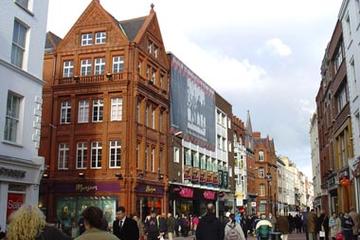 Grafton Street
Grafton Street The pedestrian-friendly Grafton Street stems off of the western end of Trinity College and runs down to the main entrance of St. Stephens Green. Acting as a direct link between these famous landmarks, Grafton Street is a main thoroughfare but is also a popular destination in itself.
Grafton Street
Grafton Street The pedestrian-friendly Grafton Street stems off of the western end of Trinity College and runs down to the main entrance of St. Stephens Green. Acting as a direct link between these famous landmarks, Grafton Street is a main thoroughfare but is also a popular destination in itself.
-
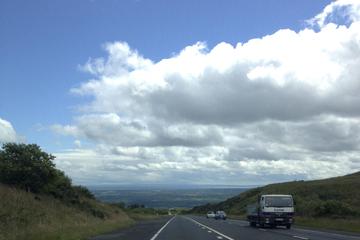 Glenshane Pass
Glenshane Pass Dreams of traveling through Ireland almost always include driving through scenic mountain roads and countryside scenes, and Glenshane Pass delivers just that. The mountain pass cuts dramatically through the Sperrin Mountains of County Londonderry in Northern Ireland. It wraps throug
Glenshane Pass
Glenshane Pass Dreams of traveling through Ireland almost always include driving through scenic mountain roads and countryside scenes, and Glenshane Pass delivers just that. The mountain pass cuts dramatically through the Sperrin Mountains of County Londonderry in Northern Ireland. It wraps throug
-
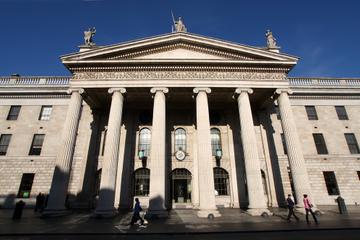 General Post Office (GPO)
General Post Office (GPO) The name might not sound inspiring, but one glimpse of the General Post Office’s (GPO) imposing facade is sure to capture your attention with its ornate stone-carved portico and iconic statues punctuating the skyline.The monumental building was constructed on OConnell Str
General Post Office (GPO)
General Post Office (GPO) The name might not sound inspiring, but one glimpse of the General Post Office’s (GPO) imposing facade is sure to capture your attention with its ornate stone-carved portico and iconic statues punctuating the skyline.The monumental building was constructed on OConnell Str
-
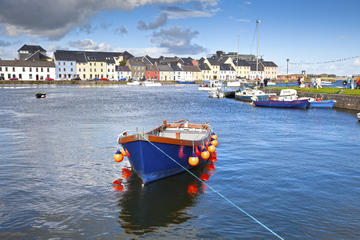 Galway Bay
Galway Bay Off the west coast of Ireland and beside Galway City, Galway Bay is a beautiful bay that has inspired many Irish legends and songs. You may have heard it sung in Arthur Colahans Galway Bay or John Lennon’s Luck of the Irish. Yet the Atlantic coast of Ireland is a scenic, natural beauty
Galway Bay
Galway Bay Off the west coast of Ireland and beside Galway City, Galway Bay is a beautiful bay that has inspired many Irish legends and songs. You may have heard it sung in Arthur Colahans Galway Bay or John Lennon’s Luck of the Irish. Yet the Atlantic coast of Ireland is a scenic, natural beauty
-
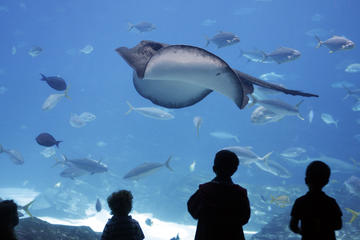 Galway Atlantaquaria
Galway Atlantaquaria Designated as the National Aquarium of Ireland and the largest aquarium in the country, Galway Atlantaquaria is one of western Ireland’s most popular attractions. An incredible 170 saltwater and freshwater species inhabit the aquarium’s tanks, imaginatively designed to mimic t
Galway Atlantaquaria
Galway Atlantaquaria Designated as the National Aquarium of Ireland and the largest aquarium in the country, Galway Atlantaquaria is one of western Ireland’s most popular attractions. An incredible 170 saltwater and freshwater species inhabit the aquarium’s tanks, imaginatively designed to mimic t
-
 Galway Arts Centre
Galway Arts Centre A long-standing cultural institution, the Galway Arts Centre is one of the city’s principal art establishments, dedicated to nurturing and furthering local talent, and encouraging awareness and support of the arts in Galway. Housed in an 1840’s stone-brick townhouse on Dominick
Galway Arts Centre
Galway Arts Centre A long-standing cultural institution, the Galway Arts Centre is one of the city’s principal art establishments, dedicated to nurturing and furthering local talent, and encouraging awareness and support of the arts in Galway. Housed in an 1840’s stone-brick townhouse on Dominick
-
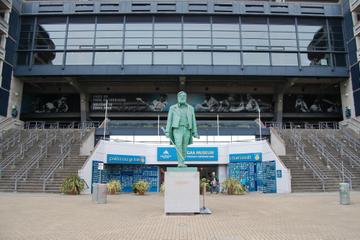 GAA Museum
GAA Museum The Gaelic Games are integral to Irish culture, and at Dublins Croke Park stadium, a visit to the popular GAA Museum will lead you through the history of the games right through to the present day. The museum focuses on the Gaelic Athletic Associations most popular sports — hurling and
GAA Museum
GAA Museum The Gaelic Games are integral to Irish culture, and at Dublins Croke Park stadium, a visit to the popular GAA Museum will lead you through the history of the games right through to the present day. The museum focuses on the Gaelic Athletic Associations most popular sports — hurling and
-
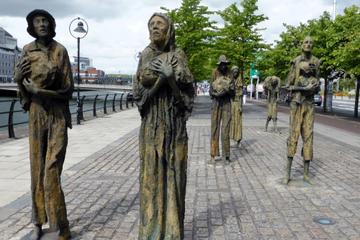 Famine Sculpture
Famine Sculpture At Custom House Quay in the Dublin Docklands, the Famine Sculpture was commissioned by the City of Dublin in 1997 as a way of remembering the victims of the Irish Famine of 1845 to 1849, when over a million Irish men, women, and children died as a result of the problems exacerbate
Famine Sculpture
Famine Sculpture At Custom House Quay in the Dublin Docklands, the Famine Sculpture was commissioned by the City of Dublin in 1997 as a way of remembering the victims of the Irish Famine of 1845 to 1849, when over a million Irish men, women, and children died as a result of the problems exacerbate
-
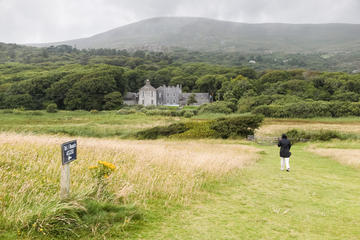 Derrynane House
Derrynane House Derrynane House is the ancestral home of Daniel O’Connell, a politician and statesman from the 19th century who promoted the Irish cause in British Parliament. The house is now an Irish National Monument and sits within 1.2 square-kilometers of National Park. It’s also a museum ded
Derrynane House
Derrynane House Derrynane House is the ancestral home of Daniel O’Connell, a politician and statesman from the 19th century who promoted the Irish cause in British Parliament. The house is now an Irish National Monument and sits within 1.2 square-kilometers of National Park. It’s also a museum ded
-
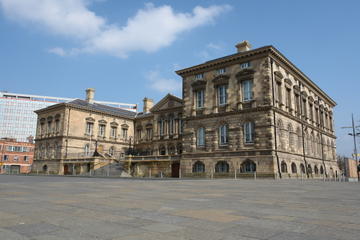 Customs House
Customs House Belfast’s customs house was the city’s first neoclassical building, built in 1856 in the High Italian Renaissance, or “Palazzo” style. It is generally considered to be one of Belfast’s finest structures and features carvings of angels and classical deities representing manufacture, c
Customs House
Customs House Belfast’s customs house was the city’s first neoclassical building, built in 1856 in the High Italian Renaissance, or “Palazzo” style. It is generally considered to be one of Belfast’s finest structures and features carvings of angels and classical deities representing manufacture, c
-
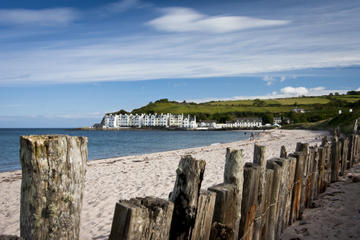 Cushendun
Cushendun Cushendun, derived from the Irish for “Foot of the Dun” for its position at the mouth of the River Dun, has long been a safe harbor for travelers between Ireland and Scotland. The village was erected in 1912, based on the villages of Cornwall in England for Ronald John McNeill, Baron Cus
Cushendun
Cushendun Cushendun, derived from the Irish for “Foot of the Dun” for its position at the mouth of the River Dun, has long been a safe harbor for travelers between Ireland and Scotland. The village was erected in 1912, based on the villages of Cornwall in England for Ronald John McNeill, Baron Cus
-
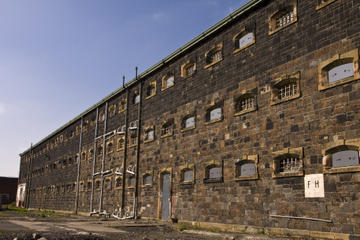 Crumlin Road Jail
Crumlin Road Jail Crumlin Road features two imposing structures of Belfast’s criminal justice system, the Crumlin Road Gaol (Jail) and Courthouse. The jail opened in 1845 and the courthouse five years later, though neither have been in service since the late 1990ss. Crumlin Road Jail is the only V
Crumlin Road Jail
Crumlin Road Jail Crumlin Road features two imposing structures of Belfast’s criminal justice system, the Crumlin Road Gaol (Jail) and Courthouse. The jail opened in 1845 and the courthouse five years later, though neither have been in service since the late 1990ss. Crumlin Road Jail is the only V
-
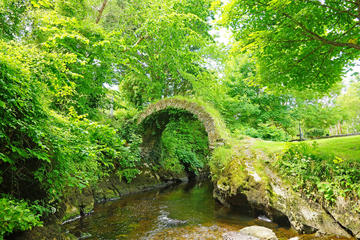 Cromwells Bridge
Cromwells Bridge No one knows quite how Cromwell’s Bridge in Kenmare got its name, but it likely wasn’t named after Oliver Cromwell. One popular theory about the stone bridge is that it was named ‘croimeal,’ the Gaelic word for ‘mustache,’ but when English-speakers overheard locals talking about t
Cromwells Bridge
Cromwells Bridge No one knows quite how Cromwell’s Bridge in Kenmare got its name, but it likely wasn’t named after Oliver Cromwell. One popular theory about the stone bridge is that it was named ‘croimeal,’ the Gaelic word for ‘mustache,’ but when English-speakers overheard locals talking about t
-
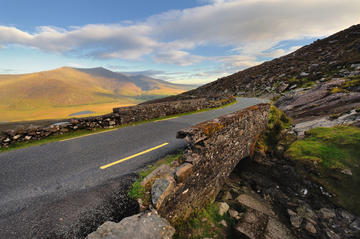 Connor Pass
Connor Pass Conor Pass is the highest mountain pass in Ireland at 1,345 feet above sea level. It is on the Dingle Peninsula in southwestern Ireland, and it is located along the road that runs from Dingle on the southern end of the peninsula towards Brandon Bay and Castlegregory. The road is narrow
Connor Pass
Connor Pass Conor Pass is the highest mountain pass in Ireland at 1,345 feet above sea level. It is on the Dingle Peninsula in southwestern Ireland, and it is located along the road that runs from Dingle on the southern end of the peninsula towards Brandon Bay and Castlegregory. The road is narrow
-
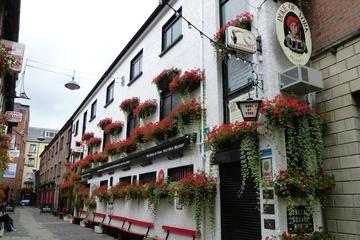 Cathedral Quarter
Cathedral Quarter In the heart of Belfast and surrounding the historic St. Anne’s Cathedral, the Cathedral Quarter has become the cultural hub of the city. Once the old merchant quarter and home to the city’s trade and manufacturing districts, it was first known for the shipbuilding and linen fabr
Cathedral Quarter
Cathedral Quarter In the heart of Belfast and surrounding the historic St. Anne’s Cathedral, the Cathedral Quarter has become the cultural hub of the city. Once the old merchant quarter and home to the city’s trade and manufacturing districts, it was first known for the shipbuilding and linen fabr
-
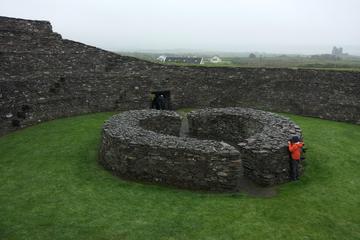 Cahergall Fort
Cahergall Fort Cahergall Fort is one of two stone forts outside the town of Caherciveen that together are known as the Ring Forts. Cahergall Fort is the larger of the two, built from as early as the eighth century. Much of the stone ring fort’s walls have been reconstructed, making it one of the b
Cahergall Fort
Cahergall Fort Cahergall Fort is one of two stone forts outside the town of Caherciveen that together are known as the Ring Forts. Cahergall Fort is the larger of the two, built from as early as the eighth century. Much of the stone ring fort’s walls have been reconstructed, making it one of the b
-
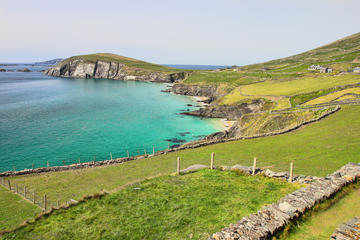 Blasket Islands
Blasket Islands Dingle Peninsula lie a group of abandoned sandstone islands rise out of the Atlantic Ocean. The Blasket Islands (Na Blascaodaí in Irish) have all been occupied at one point or another, but it was the tiny community on the largest island, The Great Blasket, that gained fame for its
Blasket Islands
Blasket Islands Dingle Peninsula lie a group of abandoned sandstone islands rise out of the Atlantic Ocean. The Blasket Islands (Na Blascaodaí in Irish) have all been occupied at one point or another, but it was the tiny community on the largest island, The Great Blasket, that gained fame for its
-
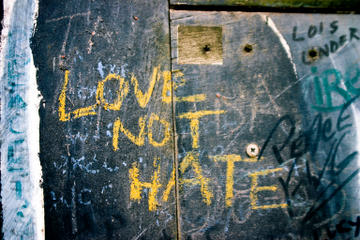 Belfast Peace Wall
Belfast Peace Wall Dating back to 1969, the Belfast Peace Walls, or Peace Lines, are a series of barriers that were put up between Irish Nationalist and Unionist neighborhoods throughout Northern Ireland. Originally intended to be only temporary structures between Protestant and Catholic neighborh
Belfast Peace Wall
Belfast Peace Wall Dating back to 1969, the Belfast Peace Walls, or Peace Lines, are a series of barriers that were put up between Irish Nationalist and Unionist neighborhoods throughout Northern Ireland. Originally intended to be only temporary structures between Protestant and Catholic neighborh
-
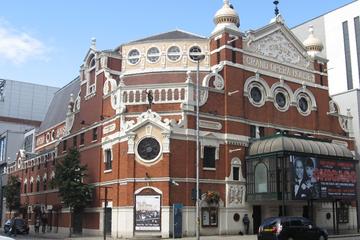 Belfast Grand Opera House
Belfast Grand Opera House The Belfast Grand Opera House is a survivor. It opened in 1895 and has weathered decline in musical theater audiences, the threat of demolition, and blast damage during the Troubles (it was unfortunately near the often-targeted Europa Bar). It spent some time as a cinema
Belfast Grand Opera House
Belfast Grand Opera House The Belfast Grand Opera House is a survivor. It opened in 1895 and has weathered decline in musical theater audiences, the threat of demolition, and blast damage during the Troubles (it was unfortunately near the often-targeted Europa Bar). It spent some time as a cinema
-
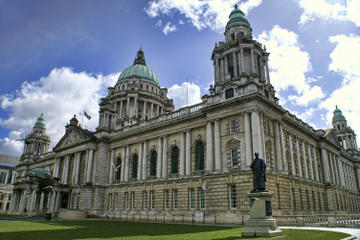 Belfast City Hall
Belfast City Hall Belfast City Hall was built to commemorate the event of Belfast becoming a city, having been granted the status in 1888 by Queen Victoria in recognition of the contributions of Belfast in the industries of linen, rope, tobacco, engineering and shipbuilding. This imposing structur
Belfast City Hall
Belfast City Hall Belfast City Hall was built to commemorate the event of Belfast becoming a city, having been granted the status in 1888 by Queen Victoria in recognition of the contributions of Belfast in the industries of linen, rope, tobacco, engineering and shipbuilding. This imposing structur
Total
1137 -travel
FirstPage PreviousPage NextPage LastPage CurrentPage:
2/57 20-travel/Page GoTo Page:
 Grafton Street
Grafton Street The pedestrian-friendly Grafton Street stems off of the western end of Trinity College and runs down to the main entrance of St. Stephens Green. Acting as a direct link between these famous landmarks, Grafton Street is a main thoroughfare but is also a popular destination in itself.
Grafton Street
Grafton Street The pedestrian-friendly Grafton Street stems off of the western end of Trinity College and runs down to the main entrance of St. Stephens Green. Acting as a direct link between these famous landmarks, Grafton Street is a main thoroughfare but is also a popular destination in itself.
 Glenshane Pass
Glenshane Pass Dreams of traveling through Ireland almost always include driving through scenic mountain roads and countryside scenes, and Glenshane Pass delivers just that. The mountain pass cuts dramatically through the Sperrin Mountains of County Londonderry in Northern Ireland. It wraps throug
Glenshane Pass
Glenshane Pass Dreams of traveling through Ireland almost always include driving through scenic mountain roads and countryside scenes, and Glenshane Pass delivers just that. The mountain pass cuts dramatically through the Sperrin Mountains of County Londonderry in Northern Ireland. It wraps throug
 General Post Office (GPO)
General Post Office (GPO) The name might not sound inspiring, but one glimpse of the General Post Office’s (GPO) imposing facade is sure to capture your attention with its ornate stone-carved portico and iconic statues punctuating the skyline.The monumental building was constructed on OConnell Str
General Post Office (GPO)
General Post Office (GPO) The name might not sound inspiring, but one glimpse of the General Post Office’s (GPO) imposing facade is sure to capture your attention with its ornate stone-carved portico and iconic statues punctuating the skyline.The monumental building was constructed on OConnell Str
 Galway Bay
Galway Bay Off the west coast of Ireland and beside Galway City, Galway Bay is a beautiful bay that has inspired many Irish legends and songs. You may have heard it sung in Arthur Colahans Galway Bay or John Lennon’s Luck of the Irish. Yet the Atlantic coast of Ireland is a scenic, natural beauty
Galway Bay
Galway Bay Off the west coast of Ireland and beside Galway City, Galway Bay is a beautiful bay that has inspired many Irish legends and songs. You may have heard it sung in Arthur Colahans Galway Bay or John Lennon’s Luck of the Irish. Yet the Atlantic coast of Ireland is a scenic, natural beauty
 Galway Atlantaquaria
Galway Atlantaquaria Designated as the National Aquarium of Ireland and the largest aquarium in the country, Galway Atlantaquaria is one of western Ireland’s most popular attractions. An incredible 170 saltwater and freshwater species inhabit the aquarium’s tanks, imaginatively designed to mimic t
Galway Atlantaquaria
Galway Atlantaquaria Designated as the National Aquarium of Ireland and the largest aquarium in the country, Galway Atlantaquaria is one of western Ireland’s most popular attractions. An incredible 170 saltwater and freshwater species inhabit the aquarium’s tanks, imaginatively designed to mimic t
 Galway Arts Centre
Galway Arts Centre A long-standing cultural institution, the Galway Arts Centre is one of the city’s principal art establishments, dedicated to nurturing and furthering local talent, and encouraging awareness and support of the arts in Galway. Housed in an 1840’s stone-brick townhouse on Dominick
Galway Arts Centre
Galway Arts Centre A long-standing cultural institution, the Galway Arts Centre is one of the city’s principal art establishments, dedicated to nurturing and furthering local talent, and encouraging awareness and support of the arts in Galway. Housed in an 1840’s stone-brick townhouse on Dominick
 GAA Museum
GAA Museum The Gaelic Games are integral to Irish culture, and at Dublins Croke Park stadium, a visit to the popular GAA Museum will lead you through the history of the games right through to the present day. The museum focuses on the Gaelic Athletic Associations most popular sports — hurling and
GAA Museum
GAA Museum The Gaelic Games are integral to Irish culture, and at Dublins Croke Park stadium, a visit to the popular GAA Museum will lead you through the history of the games right through to the present day. The museum focuses on the Gaelic Athletic Associations most popular sports — hurling and
 Famine Sculpture
Famine Sculpture At Custom House Quay in the Dublin Docklands, the Famine Sculpture was commissioned by the City of Dublin in 1997 as a way of remembering the victims of the Irish Famine of 1845 to 1849, when over a million Irish men, women, and children died as a result of the problems exacerbate
Famine Sculpture
Famine Sculpture At Custom House Quay in the Dublin Docklands, the Famine Sculpture was commissioned by the City of Dublin in 1997 as a way of remembering the victims of the Irish Famine of 1845 to 1849, when over a million Irish men, women, and children died as a result of the problems exacerbate
 Derrynane House
Derrynane House Derrynane House is the ancestral home of Daniel O’Connell, a politician and statesman from the 19th century who promoted the Irish cause in British Parliament. The house is now an Irish National Monument and sits within 1.2 square-kilometers of National Park. It’s also a museum ded
Derrynane House
Derrynane House Derrynane House is the ancestral home of Daniel O’Connell, a politician and statesman from the 19th century who promoted the Irish cause in British Parliament. The house is now an Irish National Monument and sits within 1.2 square-kilometers of National Park. It’s also a museum ded
 Customs House
Customs House Belfast’s customs house was the city’s first neoclassical building, built in 1856 in the High Italian Renaissance, or “Palazzo” style. It is generally considered to be one of Belfast’s finest structures and features carvings of angels and classical deities representing manufacture, c
Customs House
Customs House Belfast’s customs house was the city’s first neoclassical building, built in 1856 in the High Italian Renaissance, or “Palazzo” style. It is generally considered to be one of Belfast’s finest structures and features carvings of angels and classical deities representing manufacture, c
 Cushendun
Cushendun Cushendun, derived from the Irish for “Foot of the Dun” for its position at the mouth of the River Dun, has long been a safe harbor for travelers between Ireland and Scotland. The village was erected in 1912, based on the villages of Cornwall in England for Ronald John McNeill, Baron Cus
Cushendun
Cushendun Cushendun, derived from the Irish for “Foot of the Dun” for its position at the mouth of the River Dun, has long been a safe harbor for travelers between Ireland and Scotland. The village was erected in 1912, based on the villages of Cornwall in England for Ronald John McNeill, Baron Cus
 Crumlin Road Jail
Crumlin Road Jail Crumlin Road features two imposing structures of Belfast’s criminal justice system, the Crumlin Road Gaol (Jail) and Courthouse. The jail opened in 1845 and the courthouse five years later, though neither have been in service since the late 1990ss. Crumlin Road Jail is the only V
Crumlin Road Jail
Crumlin Road Jail Crumlin Road features two imposing structures of Belfast’s criminal justice system, the Crumlin Road Gaol (Jail) and Courthouse. The jail opened in 1845 and the courthouse five years later, though neither have been in service since the late 1990ss. Crumlin Road Jail is the only V
 Cromwells Bridge
Cromwells Bridge No one knows quite how Cromwell’s Bridge in Kenmare got its name, but it likely wasn’t named after Oliver Cromwell. One popular theory about the stone bridge is that it was named ‘croimeal,’ the Gaelic word for ‘mustache,’ but when English-speakers overheard locals talking about t
Cromwells Bridge
Cromwells Bridge No one knows quite how Cromwell’s Bridge in Kenmare got its name, but it likely wasn’t named after Oliver Cromwell. One popular theory about the stone bridge is that it was named ‘croimeal,’ the Gaelic word for ‘mustache,’ but when English-speakers overheard locals talking about t
 Connor Pass
Connor Pass Conor Pass is the highest mountain pass in Ireland at 1,345 feet above sea level. It is on the Dingle Peninsula in southwestern Ireland, and it is located along the road that runs from Dingle on the southern end of the peninsula towards Brandon Bay and Castlegregory. The road is narrow
Connor Pass
Connor Pass Conor Pass is the highest mountain pass in Ireland at 1,345 feet above sea level. It is on the Dingle Peninsula in southwestern Ireland, and it is located along the road that runs from Dingle on the southern end of the peninsula towards Brandon Bay and Castlegregory. The road is narrow
 Cathedral Quarter
Cathedral Quarter In the heart of Belfast and surrounding the historic St. Anne’s Cathedral, the Cathedral Quarter has become the cultural hub of the city. Once the old merchant quarter and home to the city’s trade and manufacturing districts, it was first known for the shipbuilding and linen fabr
Cathedral Quarter
Cathedral Quarter In the heart of Belfast and surrounding the historic St. Anne’s Cathedral, the Cathedral Quarter has become the cultural hub of the city. Once the old merchant quarter and home to the city’s trade and manufacturing districts, it was first known for the shipbuilding and linen fabr
 Cahergall Fort
Cahergall Fort Cahergall Fort is one of two stone forts outside the town of Caherciveen that together are known as the Ring Forts. Cahergall Fort is the larger of the two, built from as early as the eighth century. Much of the stone ring fort’s walls have been reconstructed, making it one of the b
Cahergall Fort
Cahergall Fort Cahergall Fort is one of two stone forts outside the town of Caherciveen that together are known as the Ring Forts. Cahergall Fort is the larger of the two, built from as early as the eighth century. Much of the stone ring fort’s walls have been reconstructed, making it one of the b
 Blasket Islands
Blasket Islands Dingle Peninsula lie a group of abandoned sandstone islands rise out of the Atlantic Ocean. The Blasket Islands (Na Blascaodaí in Irish) have all been occupied at one point or another, but it was the tiny community on the largest island, The Great Blasket, that gained fame for its
Blasket Islands
Blasket Islands Dingle Peninsula lie a group of abandoned sandstone islands rise out of the Atlantic Ocean. The Blasket Islands (Na Blascaodaí in Irish) have all been occupied at one point or another, but it was the tiny community on the largest island, The Great Blasket, that gained fame for its
 Belfast Peace Wall
Belfast Peace Wall Dating back to 1969, the Belfast Peace Walls, or Peace Lines, are a series of barriers that were put up between Irish Nationalist and Unionist neighborhoods throughout Northern Ireland. Originally intended to be only temporary structures between Protestant and Catholic neighborh
Belfast Peace Wall
Belfast Peace Wall Dating back to 1969, the Belfast Peace Walls, or Peace Lines, are a series of barriers that were put up between Irish Nationalist and Unionist neighborhoods throughout Northern Ireland. Originally intended to be only temporary structures between Protestant and Catholic neighborh
 Belfast Grand Opera House
Belfast Grand Opera House The Belfast Grand Opera House is a survivor. It opened in 1895 and has weathered decline in musical theater audiences, the threat of demolition, and blast damage during the Troubles (it was unfortunately near the often-targeted Europa Bar). It spent some time as a cinema
Belfast Grand Opera House
Belfast Grand Opera House The Belfast Grand Opera House is a survivor. It opened in 1895 and has weathered decline in musical theater audiences, the threat of demolition, and blast damage during the Troubles (it was unfortunately near the often-targeted Europa Bar). It spent some time as a cinema
 Belfast City Hall
Belfast City Hall Belfast City Hall was built to commemorate the event of Belfast becoming a city, having been granted the status in 1888 by Queen Victoria in recognition of the contributions of Belfast in the industries of linen, rope, tobacco, engineering and shipbuilding. This imposing structur
Belfast City Hall
Belfast City Hall Belfast City Hall was built to commemorate the event of Belfast becoming a city, having been granted the status in 1888 by Queen Victoria in recognition of the contributions of Belfast in the industries of linen, rope, tobacco, engineering and shipbuilding. This imposing structur